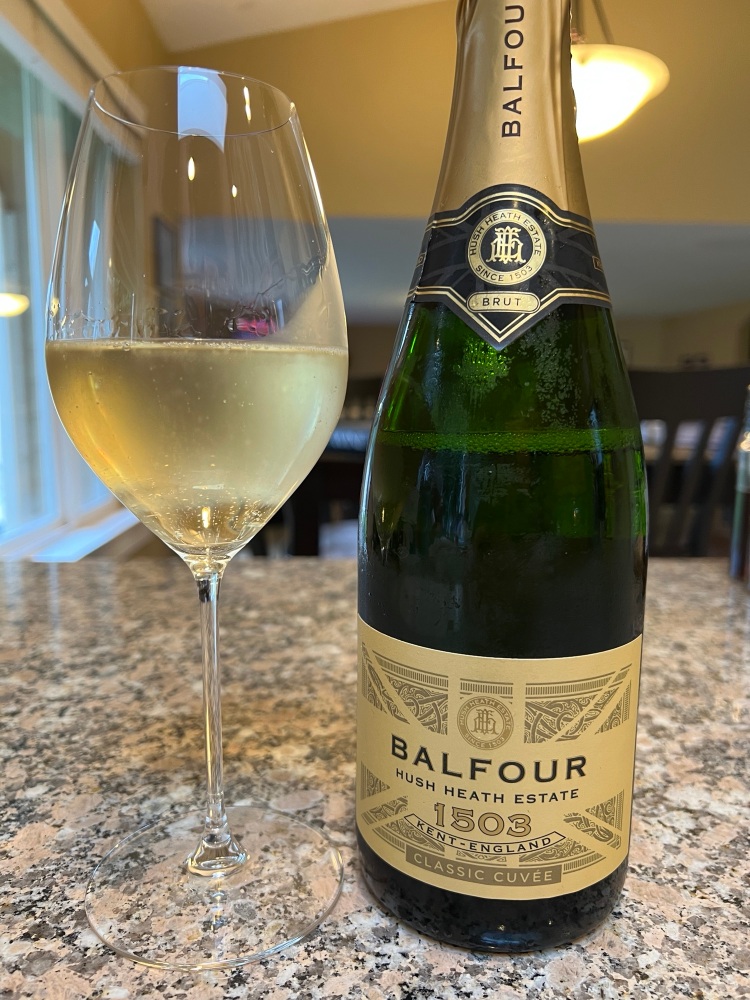
When thinking of major wine producing regions, England doesn’t jump to mind but as climate change has progressed, regions that previously were too cold or wet are now becoming viable for grape growing. This is the case for the southern part of England. International cool climate grape varieties were imported to England to begin making sparkling wines and some still wines. At least 75% of the grapes grown in this area are the varieties used for Champagne production, Chardonnay, Pinot Noir, and Meunier. The northerly latitude allows for slow ripening of grapes with long hours of daylight during the growing season. Grapes for sparkling wines are picked when there is a high level of acid in the grapes, which means they don’t have to stay on the vine late into autumn. There is still the significant threat of rain events during the growing season that can drastically reduce yields by increasing fungal disease. The soils in England’s Downs (a group of hills in southern England) are chalky, similar to the soil composition in Champagne, France. Chalky soils are said to produce wines that are more acidic and refined. When grape cultivation first started, chaptalization (addition of sugar) was common during winemaking. This was carried out prior to fermentation to increase the level of alcohol in the final wine. This also creates wines that feel rounder on the palate. Over time, this process has become less necessary because natural sugars are getting closer to desired levels at harvest due to warmer growing seasons. When I purchased my bottle for this week, the shop owner was telling me how the first English wines they sampled a few years ago were almost painfully acidic but now they are more well balanced. This could also be in part due to the fact wineries have been around longer and have been able to store some reserve wine that can be blended into the final wine to make a more consistent style.
This week, I drank a NV Balfour Hush Heath Estate 1503 Classic Cuvee from Kent. This wine is a blend of equal parts Pinot Noir and Chardonnay, with 10% Meunier. It is a pale lemon color with persistent bubbles rising to the surface. The nose is dominated by aromas of sourdough bread dough and blanched almonds. These notes combine with lemon peel, green apple, green pear, custard and a touch of salinity. On the palate, this dry wine exhibited a creamy mousse and moderate body which helped balance the bright acid. The vivid aromas also appeared on the palate. This wine is bottled on demand. This means that it doesn’t sit in a warehouse ready to ship for long periods of time, which can allow fresh fruit aromas and flavors to lose their vibrancy. Some wineries also include a disgorgement date on the label which can also indicate the age of the wine. Disgorgement dates can be especially helpful for non-vintage wines where the contents are blends of multiple vintages. This bottle was intended for immediate consumption, not for cellaring. I paired it with buffalo wings and ranch dressing but it would also pair well with fish and chips with tartar sauce!
-TheLooseTannin